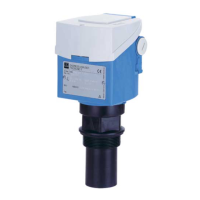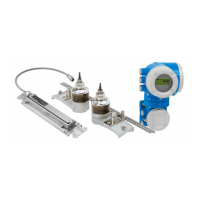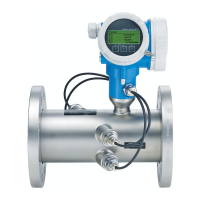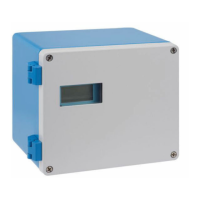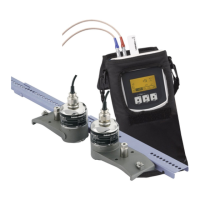How to correct a non-monotone linearisation curve on Endress+Hauser Prosonic M FMU41?
- GgarzabrandonSep 8, 2025
To correct a linearisation curve that is not monotone, adjust the table by entering a monotonously increasing table.
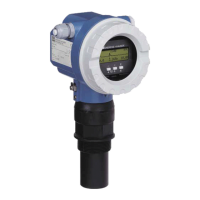
How to correct a non-monotone linearisation curve on Endress+Hauser Prosonic M FMU41?
To correct a linearisation curve that is not monotone, adjust the table by entering a monotonously increasing table.
What to do if there are less than 2 linearisation points on Endress+Hauser Prosonic M FMU41?
If there are fewer than 2 linearisation points, enter additional value pairs.
What to do when 'new sensor type detected' appears on Endress+Hauser Prosonic M FMU41?
When a 'new sensor type detected' message appears, perform a reset.
How to resolve the 'Linearisation incomplete' error on Endress+Hauser Prosonic M FMU41 Measuring Instruments?
To resolve the 'Linearisation incomplete' error, activate the linearisation table.
How to switch simulation mode off on Endress+Hauser Prosonic M FMU41 Measuring Instruments?
To switch simulation mode off, use the ["output" (06) function group, "simulation" (065) function].
| Device Type | Ultrasonic Level Measurement |
|---|---|
| Measurement Principle | Ultrasonic Time-of-Flight |
| Protection | IP68 |
| Application | Level measurement of liquids and solids |
| Measuring Range (Solids) | 0.3 to 5 m |
| Process Temperature | -40 to +80 °C |
| Output Signal | 4...20mA HART |
| Power Supply | 24 V DC |
| Housing Material | Aluminum or Stainless Steel |
| Communication | HART |
| Display | LCD |
Defines the Prosonic M's application and measurement capabilities.
Outlines requirements for safe installation, start-up, and operation.
Emphasizes safety measures during device configuration, testing, and maintenance.
Explains symbols and conventions used to highlight safety-relevant information.
Details information on the device's nameplate for identification.
Lists configurable options and codes for the FMU40 model.
Lists configurable options and codes for the FMU41 model.
Lists configurable options and codes for the FMU42 model.
Lists configurable options and codes for the FMU43 model.
Lists configurable options and codes for the FMU44 model.
Lists the instrument and accessories included in the product package.
Provides physical dimensions and drawings for FMU40/41 and FMU42/44 models.
Illustrates different methods for installing the FMU40 and FMU41 sensors.
Details environmental and physical conditions for optimal level measurement.
Specifies nozzle diameters, sensor characteristics, and maximum ranges.
Provides specific guidance for correctly installing FMU40 and FMU41 models.
Lists checks to perform after installation to ensure proper function.
Details procedures and precautions for making electrical connections to the device.
Describes how to connect the device using the FOUNDATION Fieldbus plug.
Lists minimum and maximum terminal voltages for different device types.
Provides guidelines for optimal electrical connections, especially for EMC.
Explains how to operate the device using the built-in display and keypad.
Details options for interacting with the device directly at the installation site.
Provides a step-by-step guide to navigating and operating via the VU331 display.
Explains how to operate the device remotely using configuration tools.
Introduces FieldCare software for device configuration and analysis.
Describes configuration using FOUNDATION Fieldbus tools.
Explains how to unlock the device to allow parameter changes.
Describes procedures for resetting device parameters to default or specific states.
Guides through the initial setup process using the VU331 display.
Details the steps for commissioning using a FOUNDATION Fieldbus configuration tool.
Explains how instrument errors are displayed and accessed via different interfaces.
Provides guidance on diagnosing and eliminating common application-related errors.
Specifies procedures and personnel qualifications for repairing Ex-approved devices.
Guides users on how to find and order spare parts via the internet.
Recommends a weather protection cover for outdoor mounting.
Lists options for screw-in flanges, including material and sensor connection types.
Presents technical data and mounting options for the FHX40 remote display.
Provides a summary of key technical specifications for the Prosonic M.
Details reaction times, operating conditions, value resolution, and measuring errors.
Outlines operating temperature, storage, climate class, and ingress protection.
Provides a visual map of the device's operating menu structure and function codes.
Explains the different function blocks and their interconnections within the device.
Explains the ultrasonic time-of-flight method and interference echo suppression.





